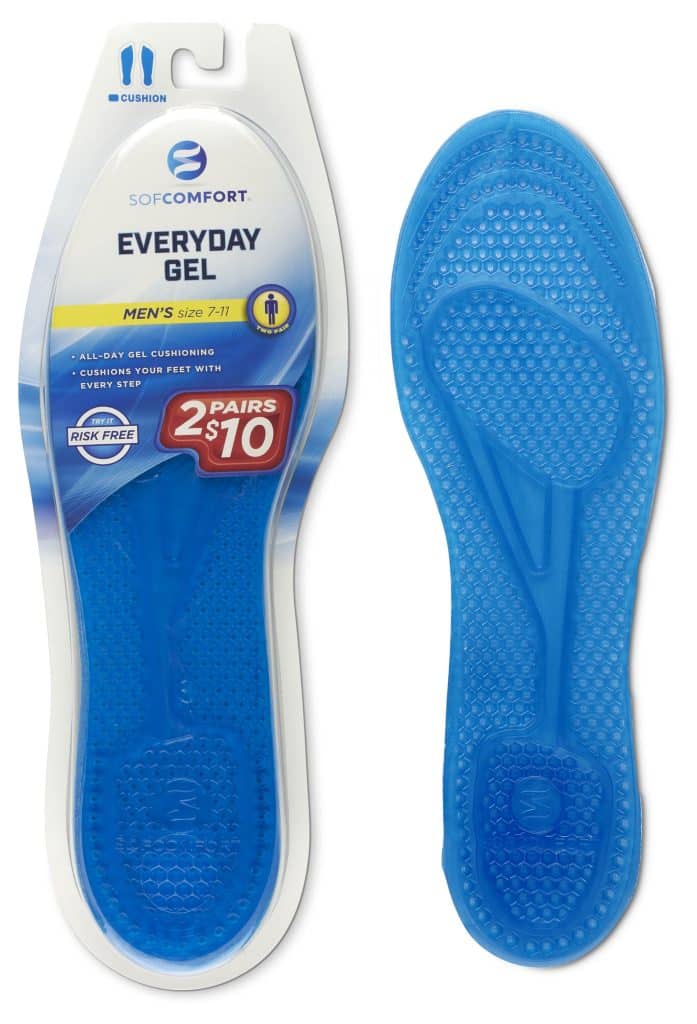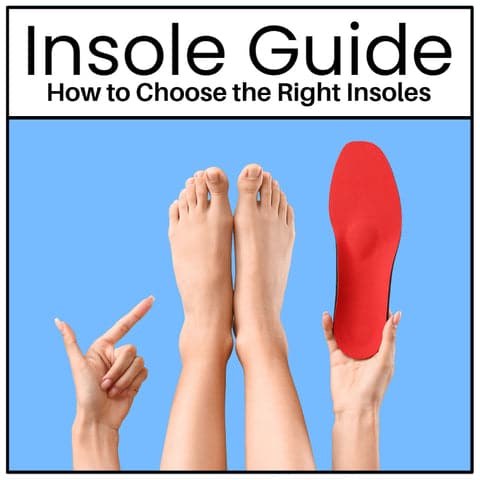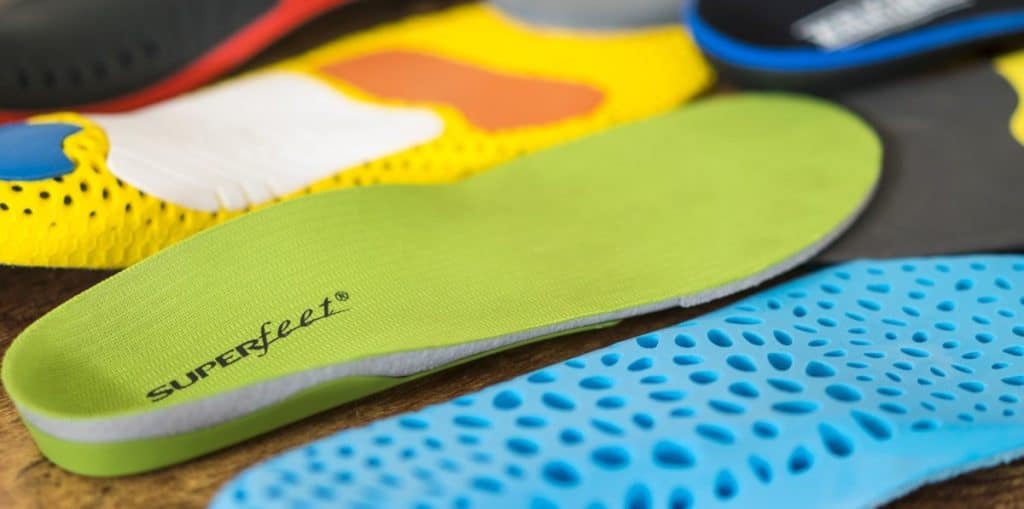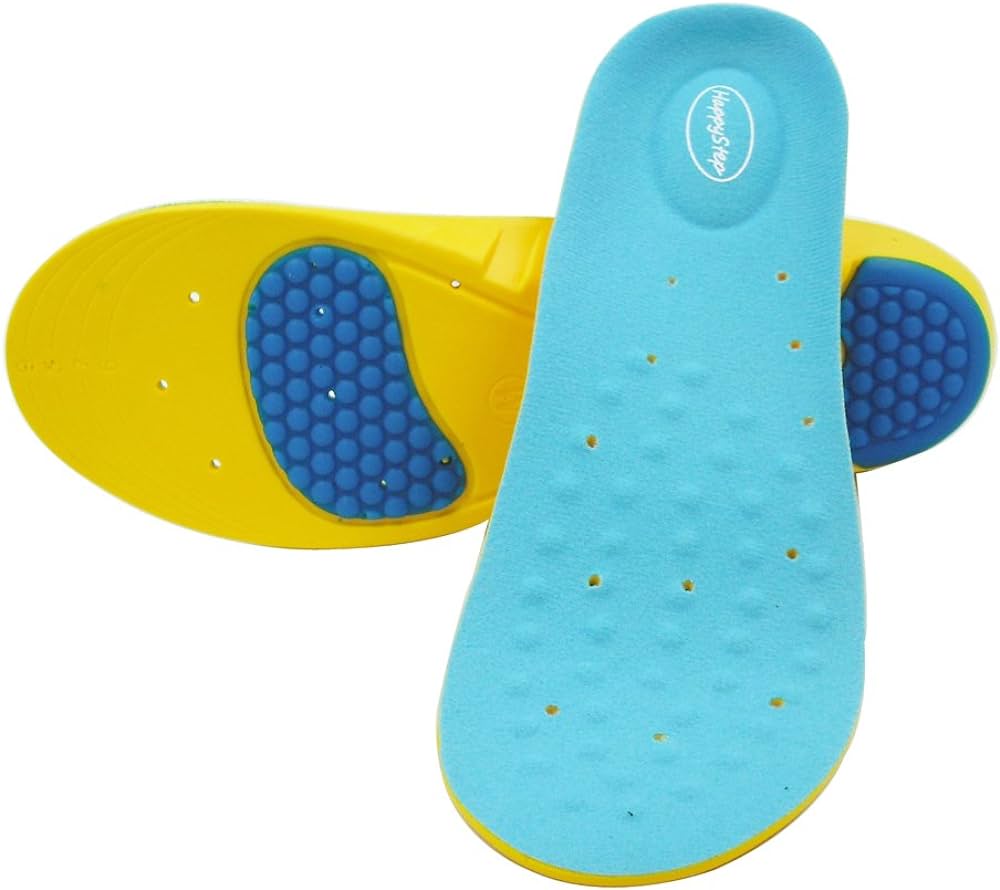In the eternal quest for comfortable footwear, many of us turn to the age-old solution of insoles. However, when faced with the choice between gel insoles and foam ones, the decision becomes more complex.
Gel insoles offer a unique combination of cushioning and support, while foam insoles provide a lightweight and flexible option.
In this article, we will explore the pros and cons of both insoles, allowing you to decide about finding the perfect fit for your feet.
This image is the property of www.drscholls.com.
The Difference Between Gel and Foam Insoles
When choosing the right insoles for your shoes, it’s essential to understand the differences between gel and foam options. Both gel and foam insoles offer various benefits regarding comfort, support, and cushioning. However, they differ in composition, effectiveness in shock absorption, support and stability, moisture absorption, breathability, fit and functionality, cost, and value for money. Let’s delve deeper into each aspect and explore which type of insole might best fit your needs.
Composition of Gel Insoles
Gel insoles are typically made from a silicone-based material that is soft and flexible. This composition allows the gel insoles to conform to the unique shape of your feet, providing a high level of cushioning and support. The gel material is designed to absorb impact and distribute pressure evenly across the foot, reducing the risk of foot fatigue and discomfort. Gel insoles often feature strategically placed gel pads or inserts to enhance further shock absorption in critical areas, such as the heel and forefoot.
Composition of Foam Insoles
Foam insoles, on the other hand, are usually made from various types of foam materials, such as memory foam or EVA (ethylene-vinyl acetate) foam. These lightweight materials provide excellent cushioning for individuals seeking comfort and pressure relief. Foam insoles typically mold to the foot’s contours, offering a custom-like fit, and are known for providing ample support while absorbing shocks.
Comfort and Cushioning
Regarding comfort and cushioning, gel insoles are often favored by users. The gel material offers superior shock absorption, relieving pressure on the feet and providing a plush and comfortable feel with each step. Gel insoles are particularly beneficial for individuals who spend long hours on their feet or engage in high-impact activities, as they minimize the strain and impact on the feet and joints.
Foam insoles, on the other hand, also provide excellent comfort and cushioning. The foam material conforms to the foot’s contours, distributing weight evenly and alleviating pressure points. This makes foam insoles popular for individuals seeking immediate relief from foot aches and pains.
Longevity and Durability
In terms of longevity and durability, gel insoles have a longer lifespan than foam insoles. The silicone-based gel material used in gel insoles is highly resistant to wear and tear, maintaining its cushioning properties over an extended period. This durability makes gel insoles cost-effective, as they can withstand regular use without losing effectiveness.
Foam insoles, on the other hand, may show signs of wear more quickly, especially in high-impact activities or for individuals with a heavier weight. However, with proper care and maintenance, foam insoles can still provide adequate support and cushioning for a reasonable period.
Effectiveness in Shock Absorption
Gel Insoles
Gel insoles are widely recognized for their excellent shock-absorbing capabilities. The gel material is designed to absorb and disperse impact throughout the insole, reducing the strain on the feet and joints.
This makes gel insoles particularly beneficial for athletes and runners who regularly expose their feet to high-impact activities. Additionally, individuals suffering from conditions such as plantar fasciitis or heel spurs may find relief through the superior shock absorption offered by gel insoles.
Foam Insoles
Foam insoles also provide commendable shock absorption. The foam material used in their construction absorbs and disperses impact, helping to maintain a stable and comfortable stride.
Foam insoles are especially suitable for individuals engaging in low to moderate-impact activities, such as casual walking or daily errands. However, gel insoles may offer a more effective solution for those requiring enhanced shock absorption, such as athletes.
Support and Stability
Gel Insoles
Gel insoles excel in providing excellent support and stability. The gel material conforms to the foot’s shape, offering a custom fit that supports the arches and provides stability throughout the gait cycle. This feature mainly benefits individuals with high arches or those seeking additional foot support. Gel insoles help distribute body weight evenly, reducing the risk of overpronation or underpronation and promoting proper foot alignment.
Foam Insoles
Foam insoles also offer decent support and stability, although they may not provide the same level of customization and contouring as gel insoles. The foam material molds to the foot, providing arch support and helping to maintain proper alignment. Foam insoles are particularly suitable for individuals with flat feet or those requiring moderate support during daily activities.
Moisture Absorption and Breathability
Gel Insoles
Gel insoles have limited moisture absorption capabilities. The gel material tends to repel moisture, which can be beneficial in preventing the growth of bacteria and odor formation. However, this lack of moisture absorption can build up sweat and moisture inside the shoe, potentially causing discomfort or reducing breathability.
Foam Insoles
Foam insoles, especially those made from breathable materials like memory foam, offer better moisture absorption and breathability. The porous structure of foam allows for air circulation, keeping the feet cool and preventing the accumulation of sweat and moisture. This makes foam insoles suitable for individuals who prioritize breathability and moisture management.
This image is the property of i5.walmartimages.com.
Fit and Functionality
Gel Insoles
Gel insoles are known for their ability to conform to the foot’s shape, offering a custom-fit experience. This ensures maximum contact between the insole and the foot, enhancing the overall functionality of the insole. Gel insoles are available in various sizes and can often be trimmed or adjusted to fit different shoe types, providing flexibility and convenience.
Foam Insoles
Foam insoles also provide a comfortable and functional fit. While they may not offer the same level of customization as gel insoles, foam insoles mold to the foot’s contours, ensuring a snug fit that promotes stability and proper alignment. Foam insoles are typically available in various sizes to accommodate different shoe sizes and styles.
Cost and Value for Money
Gel Insoles
Due to their durability and advanced shock-absorbing qualities, gel insoles often come at a slightly higher price point than foam insoles. However, considering their long lifespan and their benefits in terms of comfort and support, gel insoles can be a worthwhile investment for individuals seeking high-quality insoles that will last.
Foam Insoles
Foam insoles are generally more affordable compared to gel insoles. Their lower price point makes them an accessible option for individuals on a budget or those looking for a temporary solution. While foam insoles may not offer the same longevity as gel insoles, they can still provide adequate cushioning and support for those seeking immediate relief from foot discomfort.
This image is the property of cdn.shopify.com.
Pros and Cons of Gel Insoles
Pros
- Superior shock absorption and cushioning.
- Custom-fit and excellent support for individuals with high arches.
- Long-lasting durability that withstands regular use.
Cons
- Limited moisture absorption and breathability, potentially leading to sweat buildup.
- Higher price point compared to foam insoles.
Pros and Cons of Foam Insoles
Pros
- Excellent cushioning and pressure relief.
- Affordable pricing, making them accessible to a wide range of users.
Cons
- May show signs of wear more quickly, especially in high-impact activities or for heavy users.
- Limited customization compared to gel insoles.
This image is the property of u7q2x7c9.stackpathcdn.com.
Who Should Use Gel Insoles?
Athletes and Runners
Gel insoles are highly recommended for athletes and runners who engage in high-impact activities. Their superior shock absorption properties help reduce the strain on the feet and joints, minimizing the risk of injury and enhancing overall performance.
People with High Arches
Individuals with high arches can benefit significantly from gel insoles. The gel material molds to the foot’s unique shape, providing customized support and stability to the arches. Gel insoles help distribute body weight evenly, preventing overpronation and promoting healthy foot alignment.
Individuals with Foot Conditions
Gel insoles can relieve individuals suffering from foot conditions such as plantar fasciitis, heel spurs, or metatarsalgia. The cushioning and shock-absorbing properties of gel insoles help alleviate pain and reduce discomfort, allowing individuals to go about their daily activities more efficiently.
Who Should Use Foam Insoles?
Casual Walkers
Foam insoles are ideal for individuals engaging in casual walking or daily errands. The foam material offers excellent cushioning and pressure relief, ensuring a comfortable walking experience. Foam insoles are lightweight and support low to moderate-impact activities adequately.
Individuals with Flat Feet
Individuals with flat feet can benefit from the support and cushioning provided by foam insoles. The foam material molds to the foot’s contours, offering a customized fit that helps maintain proper foot alignment. Foam insoles can help alleviate discomfort and provide support to the arches.
Individuals with Spinal Alignment Issues
Foam insoles can also be beneficial for individuals with spinal alignment issues. The cushioning properties of foam insoles help absorb shock and reduce impact, minimizing the strain on the spine. This can help alleviate pain and discomfort associated with spinal misalignment.
In summary, gel and foam insoles offer unique benefits, and the choice between the two depends on individual needs and preferences. Gel insoles excel in shock absorption, support, and durability, making them ideal for athletes, individuals with high arches, and those with foot conditions.
On the other hand, foam insoles provide excellent cushioning, affordability, and breathability, making them suitable for casual walkers, individuals with flat feet, and those with spinal alignment issues. Assess your specific requirements and consider the features and benefits of each type of insole to make an informed decision that will enhance your overall foot comfort and support.
This image is the property of Amazon.com.













































